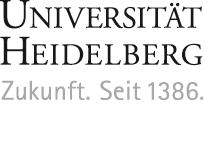Putting an Old Drug to a New Use
12 February 2007
Researchers from the University of Heidelberg, Innsbruck
Medical University and the European Molecular Biology Laboratory have
found out how to fight iron disorders with a drug against hypertension
Iron deficiencies are dangerous but too much iron is also bad for our health. Our bodies store excess iron in various tissues, where it can lead to organ failure or even death if it is not treated before irreversible damage has occurred. Researchers from the University of Heidelberg, Innsbruck Medical University and the European Molecular Biology Laboratory (EMBL) have made a surprising discovery that may lead to new therapeutic approaches to the treatment of such disorders. In this week's online issue of the Nature Medicine journal, they report that a compound frequently used to treat high blood pressure can reverse iron overload in mouse models and has the potential for successful use on similar conditions in humans.
The human body uses most of its iron in making red blood cells. Iron deficiency can lead to dangerous forms of anaemia. But too much iron can also be detrimental because iron promotes the formation of toxic radicals leading to tissue damage. Iron overload is the consequence of hereditary hemochromatosis, one of the most common genetic disorders in Europe, affecting about one in 300 persons. Excess iron also accumulates after repeated blood transfusions and can cause organ failure over time. Günter Weiss, a clinician from Innsbruck Medical University, and collaborators from the University of Heidelberg and EMBL have now established that nifedipine, a substance commonly used to control blood pressure, helps the body deal with too much iron.
"In mice with iron overload we observed that nifedipine helps mobilise iron from stores in the liver and enhances its excretion into the urine," says Weiss, an EMBL alumnus now heading a lab at the Department of General Internal Medicine, University of Innsbruck. "These effects make nifedipine a promising candidate for a new drug to treat hereditary hemochromatosis and other iron-overload disorders."
Combining electrophysiology and cell biology with molecular investigations, Weiss and his co-workers found that nifedipine exerts its effect on iron metabolism by acting on a molecule called DMT-1. DMT-1 transports iron across cell membranes.
This transport is increased 10- to 100-fold by nifedipine but how exactly the compound achieves this effect is still unknown. Nifedipine is known to block membrane channels controlling Ca2+ influx into cells, but whether it exerts its effect on iron transport indirectly by changing Ca2+ levels in the cell or by binding directly to DMT-1 in the liver and the kidney has yet to be determined.
"Understanding the precise molecular mechanism underlying nifedipine's effect on iron transport would be a major step towards developing it into an effective therapy that can be used on patients," says Martina Muckenthaler, an EMBL alumna now working at the University of Heidelberg. "Taking nifedipine from bench to bedside could be quicker than for other substances because it has already been used for years in treating patients with high blood pressure. That means we know about the drug and its side-effects."
An important step on the way from laboratory to hospital will be targeted pharmacological modifications of the compound to separate nifedipine's effect on iron metabolism from its established action on blood pressure.
"Our discovery is an excellent example of how the combination of basic research and the expertise of clinicians can yield results relevant to medicine and ultimately benefiting patients," says Matthias Hentze, associate director of EMBL and co-author of the study. "In the Molecular Medicine Partnership Unit (MMPU) between EMBL and the Medical Faculty of the University of Heidelberg we integrate molecular biology and clinical medicine to gain an understanding of the basis of human diseases. It is very gratifying to see how the collaboration with EMBL alumni and the MMPU yields exciting progress in medicine."
Published on 11 February 2007, online issue of Nature Medicine
For more information go to http://www.embl.org/aboutus/news/press/2007/11feb07/index.html
Please address any inquiries to:
Dr. Michael Schwarz
Press Officer of the University of Heidelberg
phone: 06221/542310, fax: 54317
michael.schwarz@rektorat.uni-heidelberg.de
http://www.uni-heidelberg.de/presse/index.html


